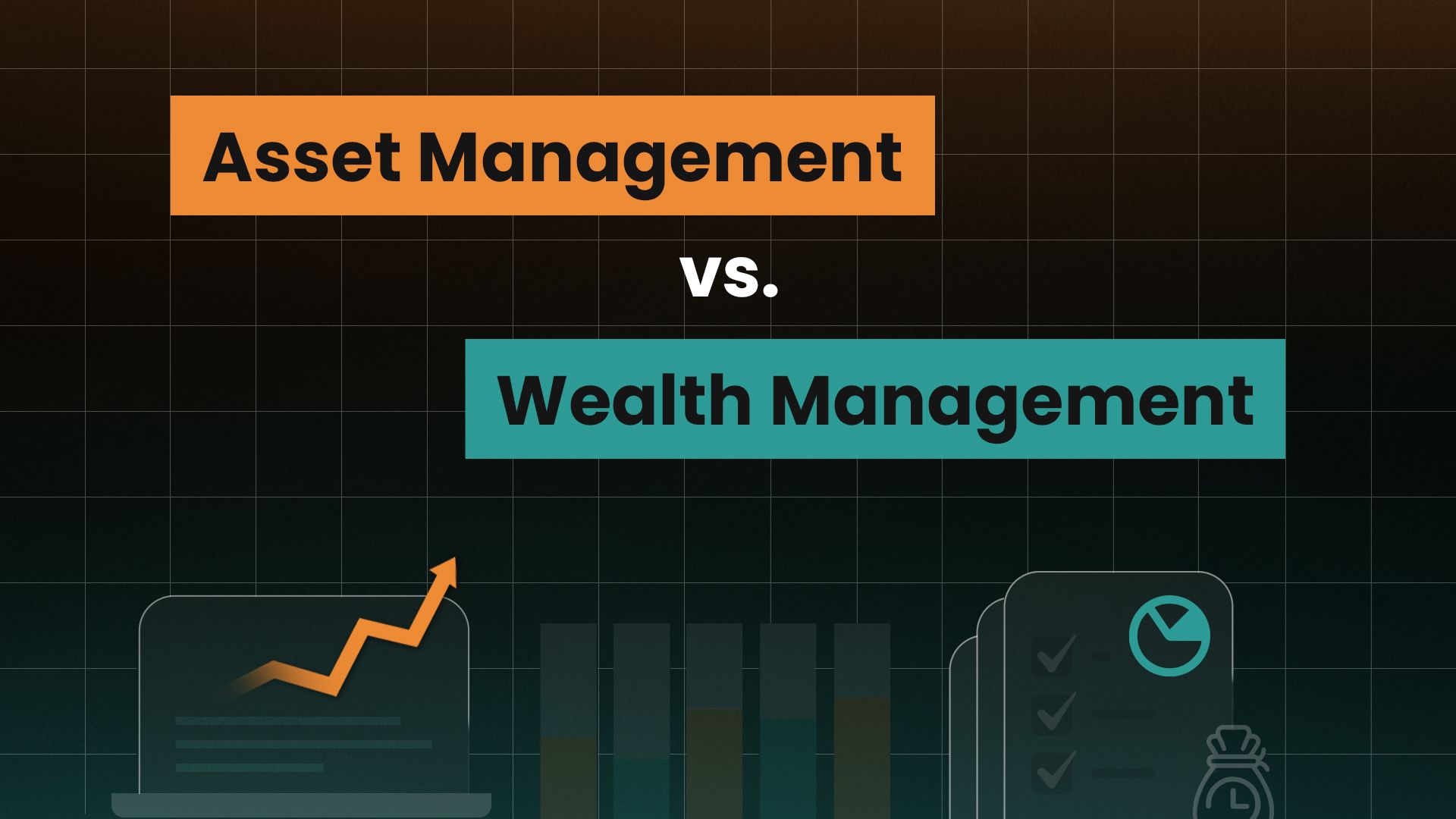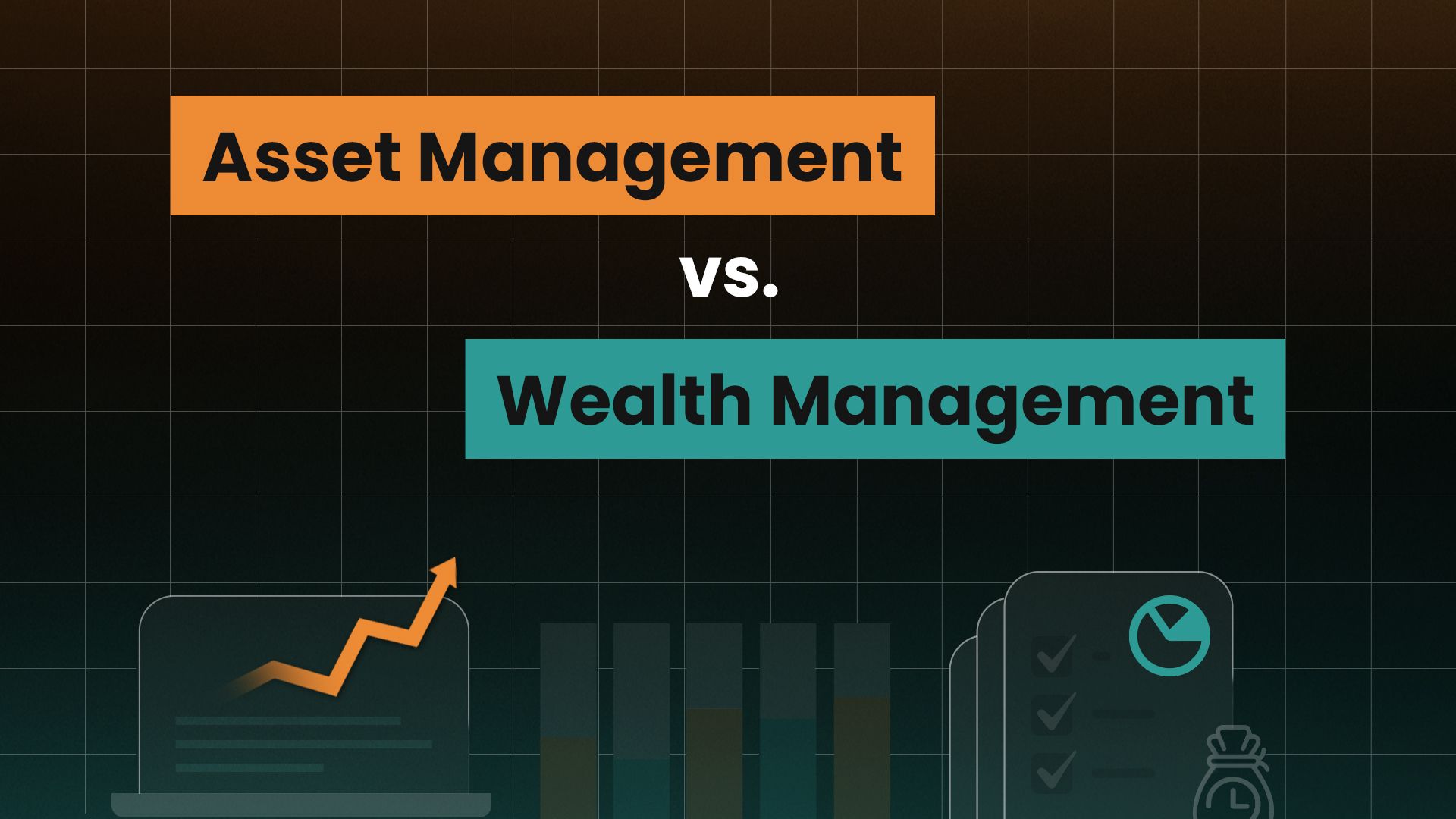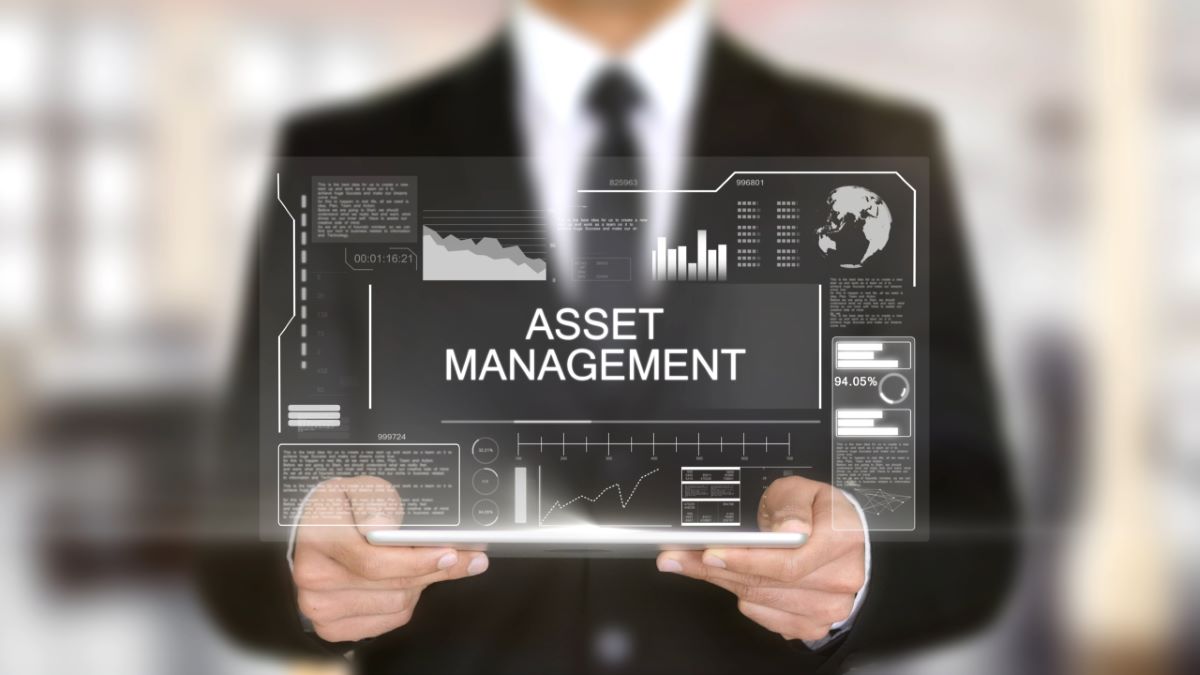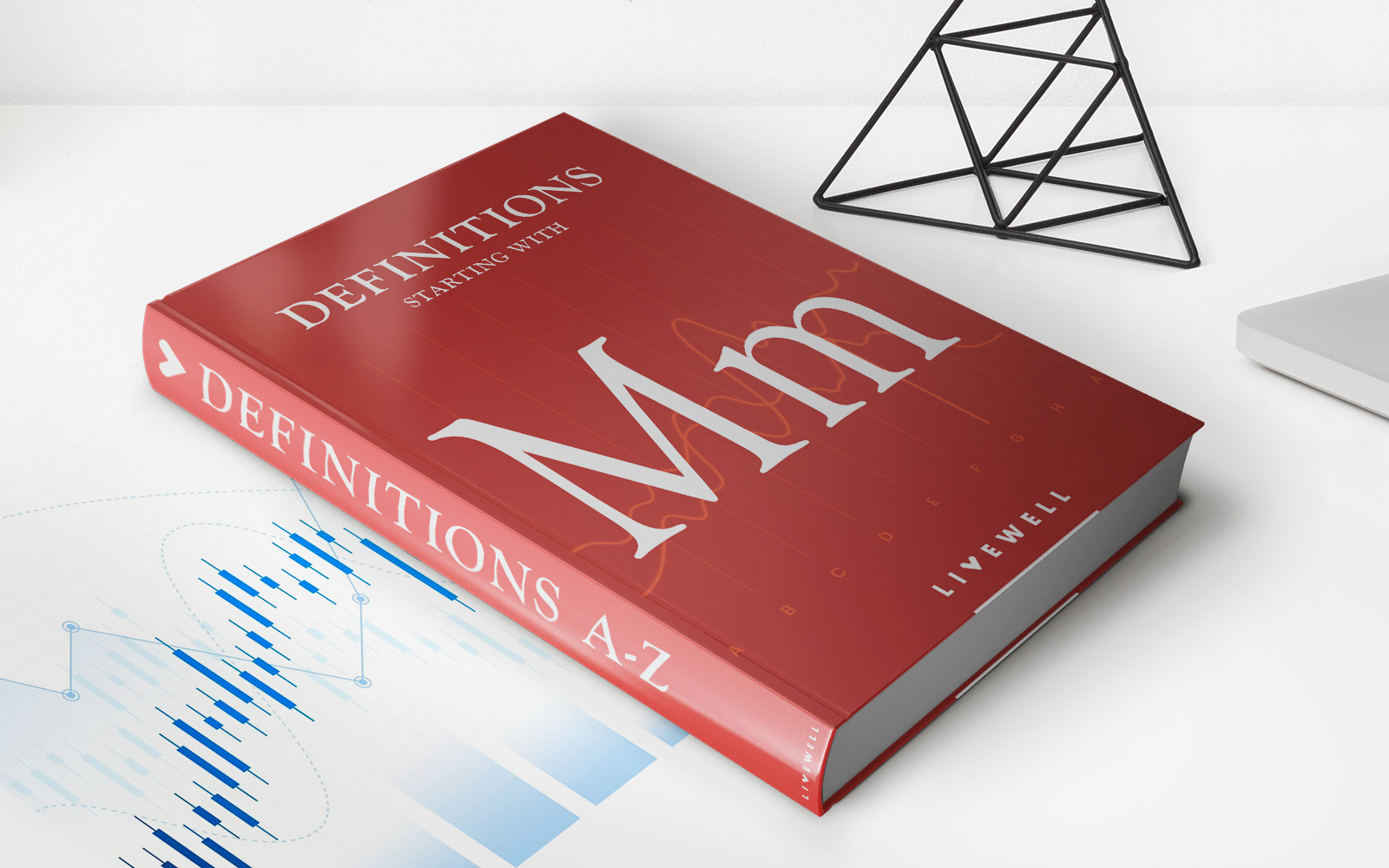

Finance
What Is Software Asset Management
Modified: December 30, 2023
Learn how software asset management can help your finance department effectively manage and optimize software resources for cost savings and compliance.
(Many of the links in this article redirect to a specific reviewed product. Your purchase of these products through affiliate links helps to generate commission for LiveWell, at no extra cost. Learn more)
Table of Contents
- Introduction
- Definition of Software Asset Management
- The Importance of Software Asset Management
- Key Components of Software Asset Management
- Benefits of Software Asset Management
- Challenges in Implementing Software Asset Management
- Best Practices for Software Asset Management
- Software Asset Management Tools and Technologies
- Conclusion
Introduction
Software Asset Management (SAM) is a fundamental aspect of any organization’s IT strategy. In today’s digital era, where software usage is ingrained in every aspect of business operations, effectively managing software assets has become crucial to ensure cost efficiency, compliance with licensing agreements, and overall organizational productivity.
SAM encompasses a range of activities, including tracking, managing, and optimizing the software assets within an organization. From the initial procurement and deployment to ongoing license management and usage monitoring, SAM plays a vital role in maximizing the value and minimizing the risks associated with software assets.
As the complexity of software licensing and usage continues to evolve, organizations are increasingly recognizing the importance of implementing a comprehensive SAM program. While it may require upfront investments in terms of time, resources, and technology, the long-term benefits of SAM outweigh the initial costs.
In this article, we will explore the definition, importance, key components, benefits, challenges, best practices, and tools of software asset management. Whether you are an IT professional, business owner, or a decision-maker involved in software management, understanding SAM is essential for optimizing the value of your software assets and ensuring compliance with licensing agreements.
Definition of Software Asset Management
Software Asset Management (SAM) refers to the set of policies, processes, and practices aimed at effectively managing and controlling an organization’s software assets throughout their lifecycle. It involves the strategic management of software licenses, usage, and compliance to optimize return on investment and mitigate legal and financial risks.
SAM encompasses a holistic approach to managing software assets, ensuring that organizations have the right software applications, in the right quantity, and in compliance with licensing agreements. It involves tasks such as procurement, deployment, tracking, optimization, and retirement of software assets.
At its core, SAM focuses on achieving three primary objectives:
- Cost Optimization: SAM enables organizations to optimize their software spending by effectively managing licenses, avoiding unnecessary purchases, and reducing expenditures on unused or underutilized software.
- License Compliance: SAM ensures that organizations adhere to software licensing agreements and comply with legal requirements. It helps mitigate the risks and associated financial penalties of non-compliance.
- Productivity Enhancement: SAM ensures that employees have access to the required software tools, minimizing downtime, improving workflow efficiency, and increasing organizational productivity.
While SAM is primarily associated with managing commercial software licenses, it also includes open-source software, custom-developed applications, and software-as-a-service (SaaS) subscriptions. SAM extends beyond the IT department and requires collaboration between IT, procurement, legal, and business units to effectively manage software assets.
Furthermore, SAM is an ongoing process rather than a one-time project. It involves continuous monitoring, updates, and adjustments as software assets and licensing agreements evolve over time. By implementing SAM, organizations can gain better control over their software assets, reduce costs, ensure compliance, and maximize the return on their software investments.
The Importance of Software Asset Management
Software Asset Management (SAM) holds significant importance for organizations across various industries. It provides numerous benefits that directly contribute to cost reduction, improved operational efficiency, compliance, and risk mitigation. Let’s explore why SAM is essential:
- Cost Savings: Implementing SAM allows organizations to optimize their software spending. By identifying and eliminating unused or underutilized software licenses, organizations can avoid unnecessary costs. SAM also helps in avoiding non-compliance penalties by ensuring the right licenses are in place.
- License Compliance: SAM ensures that organizations comply with software licensing agreements, including vendor terms and conditions, usage limitations, and deployment restrictions. Compliance helps avoid legal risks and financial penalties associated with non-compliance.
- Minimizing Audit Risks: Through regular software audits, SAM enables organizations to proactively identify and rectify any gaps or non-compliance before official vendor audits occur. This minimizes the risk of unexpected financial liabilities or legal consequences.
- Workflow Optimization: SAM allows organizations to analyze and understand their software usage patterns. This enables them to align software resources with business needs, improve workflow efficiency, and allocate licenses to maximize productivity.
- Enhanced Security: SAM helps organizations keep their software assets up to date with the latest security patches and updates. By regularly updating software, organizations minimize the risk of vulnerabilities that can be exploited by cyber-attacks, ensuring a secure IT infrastructure.
- Efficient Procurement: With SAM in place, organizations can make informed decisions when procuring new software. By analyzing existing software usage and requirements, organizations can determine the actual need for new licenses, negotiate better pricing, and avoid unnecessary purchases.
- Asset Lifecycle Management: SAM provides visibility into the entire lifecycle of software assets, including procurement, deployment, usage, and retirement. This enables organizations to effectively manage software inventory, prevent license overspending, and retire applications that are no longer needed.
Overall, SAM is essential for organizations to gain control over their software assets, optimize costs, minimize risks, and ensure licensing compliance. By implementing SAM practices, organizations can achieve a competitive advantage, improve operational effectiveness, and maximize the value of their software investments.
Key Components of Software Asset Management
Software Asset Management (SAM) comprises several key components that work together to effectively manage software assets within an organization. These components ensure that software is acquired, deployed, monitored, and retired in a controlled and optimized manner. Let’s explore the key components of SAM:
- Software Inventory: The first step in SAM is to establish a comprehensive inventory of all software assets within the organization. This includes commercial software, open-source applications, custom-developed software, and SaaS subscriptions. The software inventory should capture details such as version numbers, license types, deployment information, and usage data.
- License Management: License management involves tracking and managing all software licenses held by the organization. This includes maintaining accurate records of license agreements, entitlements, and compliance requirements. License management ensures that the organization is using the right number of licenses, avoids under or overutilization, and remains compliant with licensing agreements.
- Software Usage Monitoring: Monitoring software usage is crucial for optimizing licensing costs and identifying unused or underutilized licenses. Usage monitoring involves collecting data on software usage patterns, determining who is using the software, and for what purpose. This information helps organizations make informed decisions about license reassignment or retirement.
- Compliance Management: Compliance management focuses on ensuring that the organization complies with software licensing agreements and industry regulations. It involves implementing processes and controls to monitor and track compliance, conducting regular software audits, and addressing any non-compliance issues promptly to avoid financial penalties or legal repercussions.
- Vendor Management: Vendor management involves establishing and maintaining relationships with software vendors. This includes negotiating favorable licensing agreements, staying informed about licensing changes and updates, and effectively communicating with vendors regarding license utilization, compliance, and support.
- Procurement and Asset Lifecycle: Effective procurement practices are crucial to SAM. This involves assessing software needs, conducting cost-benefit analysis, evaluating licensing models, and negotiating contracts. Additionally, managing the asset lifecycle ensures that software assets are acquired, deployed, updated, and retired in a controlled manner, considering factors such as end-of-life support, upgrades, and replacement strategies.
- Policy and Governance: SAM policies and governance frameworks establish guidelines and procedures for software asset management. They define roles and responsibilities, specify processes for license compliance, software acquisition, and retirement, and provide guidelines for usage monitoring and reporting. Clear policies and governance ensure consistent and standardized SAM practices across the organization.
By addressing these key components, organizations can establish a robust SAM framework that enables effective software asset management, cost optimization, compliance, and risk mitigation.
Benefits of Software Asset Management
Implementing Software Asset Management (SAM) offers numerous benefits to organizations of all sizes and across various industries. These benefits range from cost savings to improved compliance and enhanced operational efficiency. Let’s explore some of the key advantages of SAM:
- Cost Savings: SAM allows organizations to optimize their software spending by identifying and eliminating inefficiencies. Through effective license management, organizations can avoid unnecessary purchases and reduce expenses on underutilized software. SAM also helps in avoiding non-compliance penalties, saving additional costs.
- License Compliance: SAM ensures that organizations remain compliant with software licensing agreements. By actively monitoring licenses, usage, and entitlements, organizations can avoid penalties and legal risks associated with non-compliance. Compliance also helps in maintaining a positive relationship with software vendors.
- Risk Mitigation: Effective SAM practices reduce the risks associated with software asset management. By proactively managing licenses, organizations minimize the chances of unexpected audits, financial liabilities, and legal consequences. SAM allows organizations to identify and rectify non-compliance issues before audits occur.
- Improved Operational Efficiency: SAM enables organizations to analyze software usage and align it with business needs. This improves workflow efficiency, reduces downtime, and enhances employee productivity. By ensuring that employees have access to the right software tools, organizations can streamline their operations and achieve better results.
- Strategic Decision Making: SAM provides organizations with data and insights into software usage, licensing metrics, and costs. This information helps management in making strategic decisions regarding IT investments, future software procurement, and budget allocation. With SAM, organizations can align their technology roadmap with business objectives.
- Vendor Relationship Management: SAM promotes good vendor relationships by facilitating effective communication and collaboration. By actively managing software licenses, organizations can negotiate better terms and pricing with vendors. Regular communications with vendors help in staying informed about licensing changes, updates, and support options.
- Security and Data Protection: SAM ensures that software assets are up to date with the latest security patches and updates. By keeping software applications current, organizations can protect themselves from cybersecurity threats, vulnerabilities, and data breaches. SAM helps in maintaining a secure IT infrastructure.
- Efficient Asset Lifecycle Management: SAM allows organizations to effectively manage the entire lifecycle of their software assets. From procurement to retirement, organizations can optimize resources, prevent overspending, and reduce software bloat. SAM helps in retiring applications that are no longer used or supported, maximizing the value of software investments.
Overall, Software Asset Management brings a range of benefits to organizations, including cost savings, compliance assurance, risk mitigation, improved efficiency, and better decision making. By implementing SAM, organizations can enhance their IT governance, achieve cost optimization, and gain a competitive edge in the market.
Challenges in Implementing Software Asset Management
Implementing Software Asset Management (SAM) within an organization can present several challenges. While SAM offers numerous benefits, organizations must be aware of these challenges and address them effectively to ensure successful implementation. Here are some common challenges that organizations may face when implementing SAM:
- Lack of Awareness: One of the primary challenges with SAM is the lack of awareness and understanding of its importance. Many organizations may not realize the potential risks and benefits associated with managing software assets effectively. This lack of awareness can result in inadequate investment of time, resources, and budget in implementing a robust SAM program.
- Complexity of Licensing: Software licensing can be complex, with various types of licenses, agreements, and deployment models. Understanding licensing terms, entitlements, and compliance requirements can be challenging, especially in organizations with a large software portfolio. Ensuring compliance with licensing agreements can require significant effort and expertise.
- Inventory Management: Creating and maintaining an accurate software inventory can be a challenge, especially in organizations with distributed and diverse IT infrastructure. Tracking all software assets, including licenses, installations, versions, and deployment locations, requires an efficient inventory management system and ongoing monitoring.
- Data Accuracy and Quality: SAM heavily relies on accurate and reliable data for effective decision-making. However, obtaining accurate data on software usage, license entitlements, and deployment can be challenging. Incomplete or inaccurate data can lead to misalignment between software usage, licenses, and compliance.
- Cultural Resistance: Implementing SAM often requires changes in processes, workflows, and mindset within the organization. Resistance to change can arise from various stakeholders, including employees, IT teams, and other departments. Overcoming this resistance and gaining buy-in for SAM initiatives can be a challenge.
- Technology Limitations: Technology plays a crucial role in implementing SAM successfully. However, organizations may face challenges in finding the right SAM tools and technologies that align with their needs and infrastructure. Integration with existing IT systems and ensuring compatibility with different software vendors’ tools can be challenging.
- Resource Constraints: Implementing SAM requires dedicated resources, including personnel with SAM expertise, time, and budget. Small and medium-sized organizations may find it challenging to allocate sufficient resources for SAM initiatives, leading to limited progress and effectiveness in managing software assets.
To address these challenges, organizations need to establish a clear SAM strategy, invest in the right resources and tools, and promote awareness and education about the importance of SAM. It is also crucial to engage all relevant stakeholders, including IT teams, procurement, legal, and business units, to ensure cooperation and collaboration in implementing SAM successfully.
Overall, while implementing SAM can pose challenges, addressing them effectively will lead to improved cost optimization, compliance, and operational efficiency, ultimately resulting in significant benefits for the organization.
Best Practices for Software Asset Management
Implementing Software Asset Management (SAM) involves adopting best practices that help organizations effectively manage their software assets throughout their lifecycle. By following these best practices, organizations can optimize software spending, ensure compliance, and improve operational efficiency. Here are some key best practices for successful SAM implementation:
- Establish a SAM Policy: Develop a comprehensive SAM policy that defines roles, responsibilities, and procedures for managing software assets. This policy should be aligned with the organization’s goals, outline compliance requirements, and provide guidelines for software procurement, deployment, and retirement.
- Create an Accurate Software Inventory: Maintain an up-to-date inventory of all software assets, including licenses, installations, and usage details. Regularly audit and reconcile the inventory to ensure accuracy. Automated tools can help streamline the inventory management process and provide real-time visibility into software assets.
- Implement License Management: Establish a centralized license management system to track license entitlements, contracts, and compliance. Regularly review license agreements, monitor license usage, and maintain records of license allocations and activations. This helps avoid underutilization or non-compliance.
- Track Software Usage: Monitor software usage to identify any underutilized licenses or unauthorized installations. Analyze usage patterns to optimize license allocation and identify opportunities for cost-saving and process improvement. Usage monitoring also helps identify potential security risks and vulnerabilities.
- Conduct Regular Software Audits: Periodically conduct software audits to assess compliance with licensing agreements and identify discrepancies. These audits help mitigate licensing risks and prevent financial penalties and legal consequences. Involve stakeholders from IT, procurement, and legal teams during the audit process.
- Promote Employee Awareness: Educate employees about software licensing policies, compliance requirements, and their responsibilities. Encourage employees to report any unauthorized software installations or usage. Implement training programs to raise awareness of SAM and its benefits, emphasizing the importance of compliant software usage.
- Vendor Relationship Management: Maintain strong relationships with software vendors to stay informed about licensing changes, updates, and support options. Regularly communicate with vendors to discuss licensing agreements, negotiate terms, and obtain support for SAM initiatives.
- Align SAM with IT Governance: Integrate SAM practices into the organization’s overall IT governance framework. Ensure that SAM objectives align with business goals and IT strategies. Regularly review and update SAM practices to keep pace with changes in technology and the organization’s requirements.
- Review and Optimize Costs: Continuously review software usage, license agreements, and entitlements to identify opportunities for cost optimization. Eliminate underused licenses, consolidate software contracts, negotiate volume licensing agreements, and explore alternative licensing models such as subscription-based or cloud-based options.
- Regularly Update Software: Keep software applications up to date with the latest patches, bug fixes, and security updates. Regularly review software upgrade options and retire outdated or unsupported applications. This helps mitigate security risks and ensures the availability of new features and enhancements.
By implementing these best practices, organizations can establish a robust SAM framework that optimizes software spending, ensures compliance, and enhances operational efficiency. It is crucial to regularly assess and fine-tune SAM processes to adapt to changing software landscapes and emerging technologies.
Software Asset Management Tools and Technologies
Software Asset Management (SAM) relies on the effective use of tools and technologies to streamline the management of software assets. These tools provide organizations with the necessary capabilities to automate processes, collect and analyze data, ensure compliance, and optimize software usage. Here are some commonly used SAM tools and technologies:
- Software Discovery and Inventory Tools: These tools automatically scan and collect data about software installations across the organization’s IT infrastructure. They provide a comprehensive view of the software inventory, including details such as version numbers, license information, and usage data.
- License Management Solutions: License management tools help organizations track and manage software licenses, ensuring compliance with licensing agreements. These tools provide functionalities such as license tracking, license allocation, and utilization monitoring. They enable organizations to optimize license usage, avoid underutilization or overuse, and maintain compliance.
- Software Metering and Usage Monitoring Tools: These tools monitor the usage of software applications, collecting data on usage patterns, and identifying underutilized or unauthorized installations. They help organizations identify opportunities for optimization, reallocate licenses, and prevent non-compliance.
- Software Deployment and Patch Management Tools: These tools facilitate the centralized deployment, distribution, and management of software applications across an organization’s IT infrastructure. They assist in ensuring that software installations are consistent, up to date with security patches, and compliant with licensing agreements.
- Software License Optimization Tools: License optimization tools analyze software usage patterns, license entitlements, and deployment data to optimize license allocations. These tools help organizations identify opportunities for cost savings, reallocate licenses, and ensure compliance with licensing agreements.
- Contract and Vendor Management Solutions: These tools support the management of software license agreements, vendor contracts, and terms and conditions. They help organizations keep track of contract renewal dates, terms, and pricing, enabling proactive management of license agreements and effective vendor relationship management.
- IT Asset Management (ITAM) Platforms: ITAM platforms provide a holistic view of an organization’s technology assets, including hardware and software. They help organizations track all IT assets, including software licenses, hardware warranties, and maintenance contracts, to ensure comprehensive asset management.
- Reporting and Analytics Tools: Reporting and analytics tools provide organizations with insights into software usage, license compliance, and overall software asset management. These tools aid in generating custom reports, analyzing data trends, and making informed decisions related to software procurement, licensing, and usage optimization.
- Cloud-based SAM Solutions: Cloud-based SAM solutions offer the advantage of flexibility, scalability, and centralized management. These solutions enable organizations to manage software assets across multiple locations, streamline workflows, and access SAM functionalities from anywhere, anytime.
It is important for organizations to carefully evaluate their specific requirements and objectives when selecting SAM tools and technologies. Consider factors such as scalability, compatibility with existing IT infrastructure, ease of implementation, and ongoing support. Additionally, regularly assess and update the chosen tools and technologies to ensure they meet the evolving needs of the organization and the ever-changing software landscape.
Conclusion
Software Asset Management (SAM) plays a vital role in ensuring cost optimization, compliance, and operational efficiency within organizations. By effectively managing software assets throughout their lifecycle, organizations can maximize the value of their investments while minimizing risks.
In this article, we explored the definition of SAM, emphasizing its importance in today’s digital era. We discussed the key components of SAM, including software inventory management, license management, compliance monitoring, and vendor relationship management. Additionally, we highlighted the benefits of SAM, such as cost savings, license compliance, and enhanced operational efficiency.
However, implementing SAM can come with challenges such as lack of awareness, complexity of licensing, and resource constraints. To mitigate these challenges, organizations should follow best practices such as establishing a SAM policy, maintaining an accurate software inventory, and regularly updating software.
Furthermore, we discussed the importance of utilizing SAM tools and technologies, including software discovery and inventory tools, license management solutions, and reporting and analytics tools. These tools provide organizations with the necessary capabilities to automate processes, track software usage, and ensure compliance.
In conclusion, implementing SAM within organizations is essential for optimizing software spending, mitigating risks, and achieving compliance. By adopting best practices, leveraging appropriate tools, and promoting awareness, organizations can effectively manage their software assets, enhance operational efficiency, and make informed decisions regarding software acquisition and usage.
As the digital landscape continues to evolve, organizations must prioritize SAM as an integral part of their IT strategy. By doing so, they can unlock the full potential of their software investments, reduce costs, and maintain a competitive edge.














